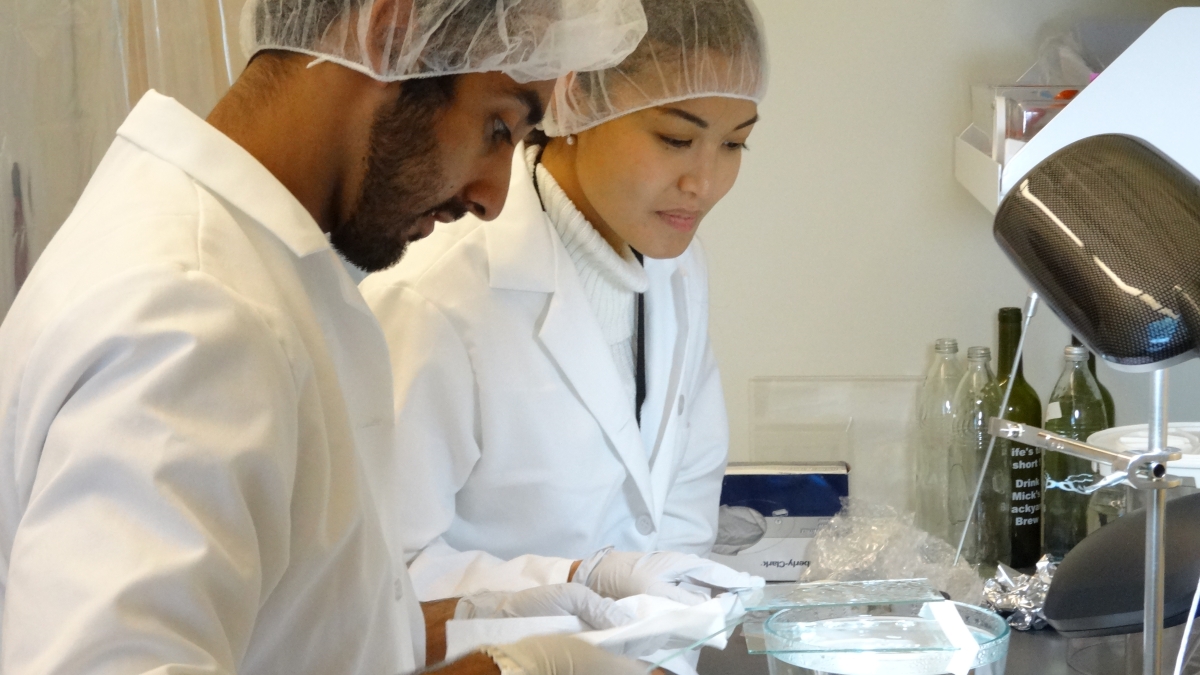ASU Edson companies innovate future in medicine, public health

Two teams from ASU's College of Liberal Arts and Sciences are making scientific breakthroughs by developing ways to prevent fogging on surgical lenses and producing a tablet that will immediately test for contaminated water.
The teams, consisting of students, researchers and faculty, are seeing their globally impactful and innovative ideas come to life through the university's Edson Student Entrepreneur Initiative, which provides seed funding, mentorship and office space to help students launch viable businesses.
The initiative selects 20 projects and provides up to $20,000 in funding per project. Edson is open for all students across ASU to apply. The deadline for 2014 is April 1.
Flat water
Nicole Herbots, ASU professor emeritus of physics, and teammates Clarizza Watson, a chemical engineer with her master's in business administration, and Ajjya Acharya, a graduate researcher with a degree in biochemistry and genetics, are developing ways to prevent fogging on microscopic surgical tools and cameras, sport lenses and vehicles with their patents for VitreOX, VitreSport and VitreShield.
“We’re changing the way the surface interacts with the molecules at the nanoscale,” Herbots said. “We force a surface to ... interact with the water so it doesn’t form a drop. It forms a sheet.”
Doctors have to repetitively clean microscopic lenses during surgery, and the process can be “highly disruptive to the rhythm of the operation,” causing a loss of view that can lead to unintentional injury to the patient, according to Eric Culbertson, a general surgeon and plastic surgery fellow at UCLA.
“It means shorter surgery time for the surgeon, shorter surgery time for the patient, less infection, less scarring,” Herbots said. “It’s not just good for everybody, it also has an economic impact – on the medical side, on the pain and suffering side, and the cost of procedure.”
Currently, SiO2 Nanotech's (their company) technology is commercialized and sold to manufacturers in the non-medical field. However, the team, with the help of Edson and other incubator programs, has expanded their potential market by patenting and working on products applicable to sports and vehicle safety.
Biosensing tablet
The idea for HydroGene Biotechnologies was born while Maddie Sands was doing research in Guatemala. Sands, a master’s student in global health who studied anthropology as an honors undergraduate, realized people in small, rural towns drank contaminated water even after being informed of the danger of germs and microbes.
“There was a real disconnect because the water looks clean,” Sands said. "There needed to be a way to easily detect contaminated water.”
Sands, who is also a pre-health student at ASU, took the problem to Nisarg Patel, Joe Yun, Hyder Hussain and Ryan Muller, fellow students she met through her science classes. “We want to help those in developing countries who don’t have a way to test for contaminated water so we can treat the water and cut down on water-borne diseases such as childhood diarrhea,” Sands said.
Most existing biosensors are too large, expensive or require electronic machinery that requires extensive technical expertise, rendering them unsuitable for people in developing countries, said Patel, a double major in molecular biosciences and biotechnology and political science.
“So our solution is to use the power of synthetic biology to solve that problem by creating a cheap, portable biosensor that can detect any source of water at any time,” Patel said.
Sands said Edson is helping them branch out to market their company's products to backpackers, the military, the meat industry and hospitals to aid in paying for the non-profit side of getting the tablets into the hands of those who need them the most.
Edson and the university have been helpful to his team, Patel said: “We’ve been able to get support from Edson Innovation challenge, the College of Liberal Arts and Sciences, as well as the School of Life Sciences in order to turn our idea into a reality, and we’re really thankful for the support they have given us through funding, mentorship, as well as resources to turn it from just something in the lab to something we can take to the real world, because that’s what we really strive to do.”
Written by Sarah Muench. This story is an excerpt from the upcoming issue of the College of Liberal Arts and Sciences Magazine.